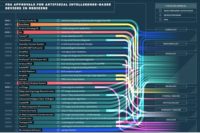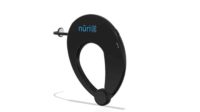OYSTER BAY, NY--Artificial intelligence (AI) is a technology that will revolutionize manufacturing in the near future, according to a new report by ABI Research. It predicts that the total installed base of AI-enabled devices in the manufacturing sector will reach 15 million in 2024, with a 65 percent annual growth rate over the next five years.
“AI in industrial manufacturing is a story of edge implementation,” says Lian Jye Su, principal analyst at ABI Research. “Since manufacturers are not comfortable having their data transferred to a public cloud, nearly all industrial AI training and inference workloads happen at the edge, namely on devices, gateways and on-premise servers.”
According to Su, more and more industrial infrastructure is equipped with AI software or dedicated AI chipsets to perform AI inference. Potential applications for AI on the factory floor include defect inspection, generative design, machine vision, predictive maintenance, production forecasting and production optimization.
“Predictive maintenance and equipment monitoring are the most commercially implemented so far, due to the maturity of associated AI models,” explains Su. “The total installed base for these two use cases alone is expected to reach 10 million and 7 million, respectively, by 2024.”
Another application currently gaining momentum is defect inspection. The total installed base is expected to grow from 300,000 in 2019 to 4 million by 2024.
“This [application] is extremely popular in electronic and semiconductor manufacturing,” claims Su. “Manufacturers such as Foxconn, LG and Samsung have been partnering with AI chipset vendors and software providers to develop AI-based machine vision to perform surface, leak and component-level defect detection, microparticle detection, geometric measurement and classification.
“Conventional machine vision technology remains popular in manufacturing, due to its proven repeatability, reliability and stability,” says Su. “However, the emergence of deep learning technologies opens the possibility of expanded capabilities and flexibility. These algorithms can pick up unexpected product abnormalities or defects, go beyond existing issues and uncover valuable new insights for manufacturers.”






